Text boxes and most shapes can include text in them. The text can be positioned horizontally or vertically, and it can appear on one line or wrap to multiple lines.
You can change the direction of the text, and you can also change the margins of text boxes and shapes for optimal spacing, or resize shapes for a better text fit.
Lines and connectors are shapes that can't have text in them.
Specify text direction in a shape or text box
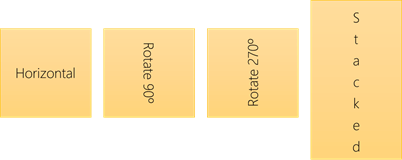
In a shape or text box, you can change the direction in which text is read. That is, you can pivot text 90 or 270 degrees so that it appears sideways.
-
Right-click the edge of the shape or text box.
-
On the shortcut menu, select Format Shape.
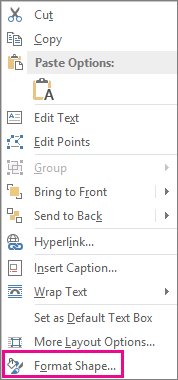
-
In the Format Shape pane, click Size/Layout & Properties
 .
. -
Under Text Box, select the option that you want in the Text direction list.
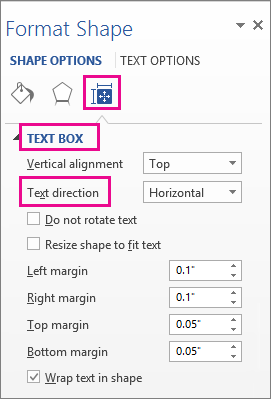
The Stacked option is available in PowerPoint and Excel, but not Word.
Rotate (mirror) text in a shape or text box
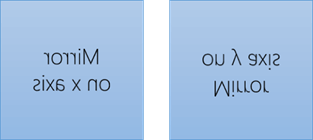
-
Insert a text box or shape in your document, and then type and format your text.
-
Right-click the box or shape and select Format Shape.
-
In the Format Shape pane, select Effects.
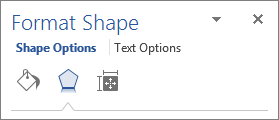
-
Under 3-D Rotation, in the X Rotation or Y Rotation box, enter 180.
-
(Optional) If your text box becomes filled with a color, you can remove the color in the Format Shapepane. Under Shape Options, click the Fill & Line tab
 , expand Fill, and select No fill.
, expand Fill, and select No fill. -
(Optional) To remove the text box outline, right-click the text box, click Outline in the mini toolbar that appears, and choose No Outline.
